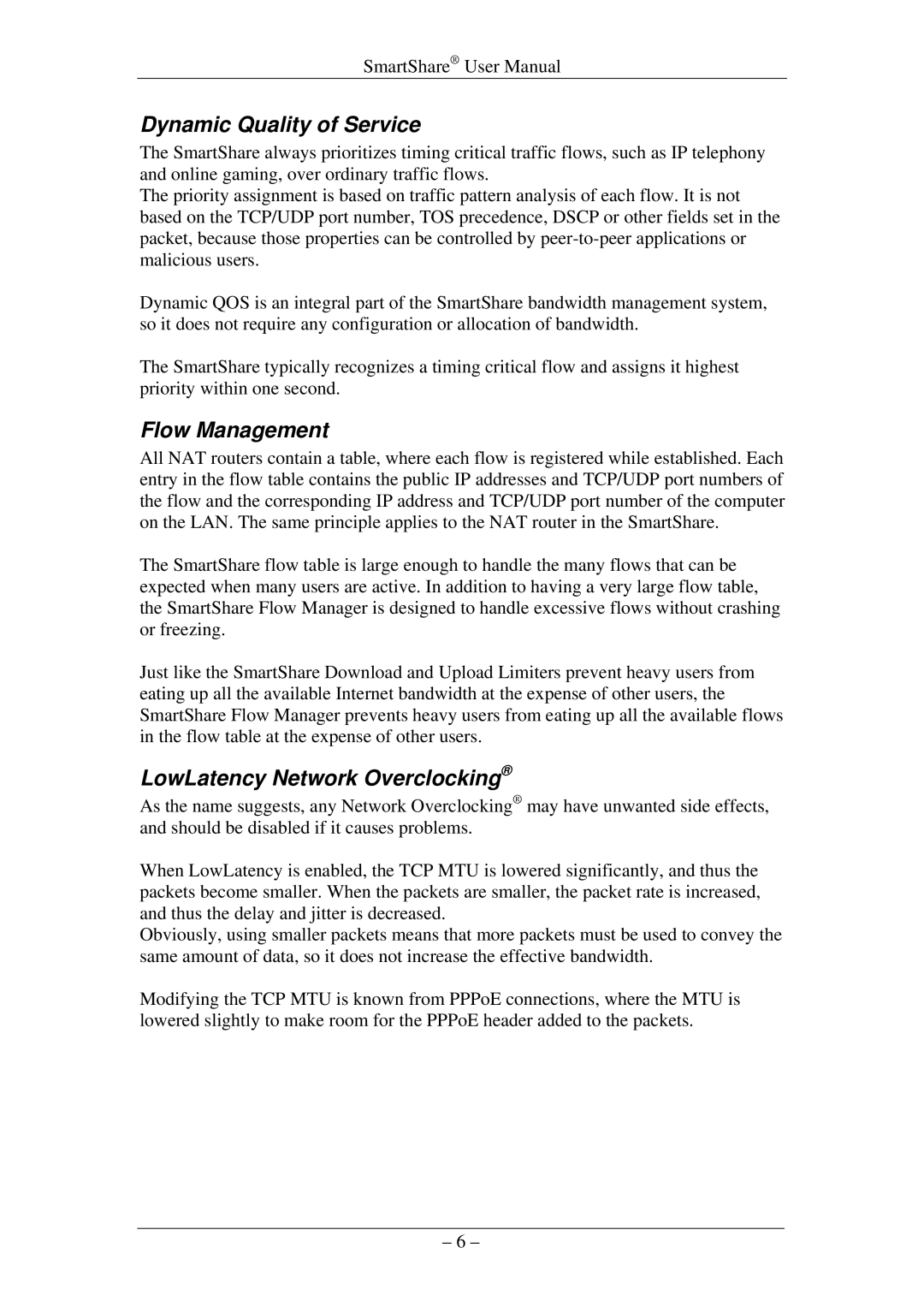
SmartShare® User Manual
Dynamic Quality of Service
The SmartShare always prioritizes timing critical traffic flows, such as IP telephony and online gaming, over ordinary traffic flows.
The priority assignment is based on traffic pattern analysis of each flow. It is not based on the TCP/UDP port number, TOS precedence, DSCP or other fields set in the packet, because those properties can be controlled by
Dynamic QOS is an integral part of the SmartShare bandwidth management system, so it does not require any configuration or allocation of bandwidth.
The SmartShare typically recognizes a timing critical flow and assigns it highest priority within one second.
Flow Management
All NAT routers contain a table, where each flow is registered while established. Each entry in the flow table contains the public IP addresses and TCP/UDP port numbers of the flow and the corresponding IP address and TCP/UDP port number of the computer on the LAN. The same principle applies to the NAT router in the SmartShare.
The SmartShare flow table is large enough to handle the many flows that can be expected when many users are active. In addition to having a very large flow table, the SmartShare Flow Manager is designed to handle excessive flows without crashing or freezing.
Just like the SmartShare Download and Upload Limiters prevent heavy users from eating up all the available Internet bandwidth at the expense of other users, the SmartShare Flow Manager prevents heavy users from eating up all the available flows in the flow table at the expense of other users.
LowLatency Network Overclocking®
As the name suggests, any Network Overclocking® may have unwanted side effects, and should be disabled if it causes problems.
When LowLatency is enabled, the TCP MTU is lowered significantly, and thus the packets become smaller. When the packets are smaller, the packet rate is increased, and thus the delay and jitter is decreased.
Obviously, using smaller packets means that more packets must be used to convey the same amount of data, so it does not increase the effective bandwidth.
Modifying the TCP MTU is known from PPPoE connections, where the MTU is lowered slightly to make room for the PPPoE header added to the packets.
– 6 –
